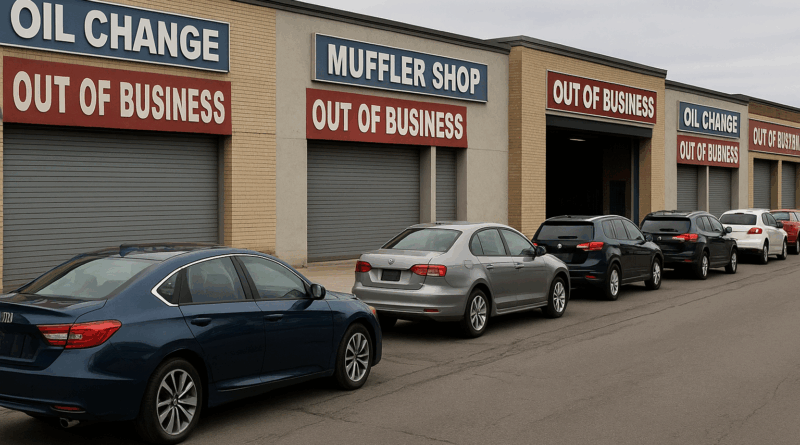The automotive landscape is on the brink of an unprecedented transformation, as electric vehicle adoption rapidly accelerates beyond critical thresholds, signaling the impending collapse of traditional internal combustion engine (ICE) infrastructure. What once felt like a distant future—a world free from routine oil changes and constant fuel stops—is fast becoming a tangible reality, reshaping daily commutes and long-term vehicle ownership. This dramatic shift will profoundly impact everything from fuel availability to maintenance costs, catching many off guard as familiar conveniences rapidly disappear.
Crossing the 40% threshold in EV adoption marks a pivotal tipping point, initiating a cascade of changes that dismantle the economic and logistical foundations of gasoline and diesel vehicles. Beyond this critical mass, the infrastructure supporting ICE cars will unravel at a pace far quicker than most current predictions suggest. Leading nations, notably Norway and China, are already providing clear blueprints for what global markets like Germany and the Netherlands will soon experience, illustrating the swift erosion of conventional automotive ecosystems.
One of the most visible impacts of this transition will be the accelerated closure of gasoline stations. In countries where electric car sales dominate, like Norway with over 90% EV new car sales, fuel pumps are already becoming scarce outside major arteries. Urban and suburban drivers will find obtaining gasoline increasingly inconvenient, prompting a natural gravitation towards electric vehicles. This shift necessitates rethinking urban charging solutions, moving beyond highway fast chargers to integrated home, work, and public destination charging.
Concurrently, the traditional automotive repair and maintenance sector faces significant contraction. Businesses centered on frequent servicing of internal combustion vehicles, such as muffler shops, oil change centers, and brake specialists, will see their customer base diminish. Electric vehicles, with vastly fewer moving parts and regenerative braking systems, dramatically reduce the need for routine maintenance, rendering many long-standing services obsolete. The economic foundation of these businesses will rapidly erode, leading to widespread closures.
This infrastructural collapse will send ripple effects through regional economies, particularly affecting employment within the automotive service industry. Countries at the forefront of this electric vehicle transition must proactively implement retraining and economic transition programs for technicians and service workers. Without strategic planning, communities dependent on these automotive services will face significant job losses, exacerbating economic challenges in an already evolving market.
Moreover, the availability of spare parts for ICE vehicles will sharply decline once EV adoption surpasses the 40% mark. Automotive manufacturers will reduce or cease production of ICE-specific components, leading to vanishing economies of scale, steep price increases, and widespread supply shortages. Owners of traditional vehicles in pioneering markets are likely to encounter significant scarcity by the late 2020s, making routine repairs prohibitively costly and further eroding the viability of owning a gasoline car.
For internal combustion engine vehicle owners, daily life will become progressively more challenging and expensive. The convenience of easy fueling and affordable maintenance will be replaced by frustrating searches for dwindling resources and exorbitant repair bills. Furthermore, expanding low-emission zones in major urban centers will impose additional restrictions, making traditional vehicle operation less viable and reinforcing the growing appeal of sustainable transport options. These compounding difficulties will compel many to embrace electric vehicles.
Historical precedent from other disruptive technologies—like the shift from film cameras to digital, or DVD rentals to streaming services—underscores the speed and inevitability of such market transformations. These examples highlight how industries reliant on outdated paradigms can collapse within years once a new technology achieves critical market share. The automotive sector’s imminent shift mirrors these past disruptions, signaling a rapid and profound reordering of the entire industry.
The urgency for proactive planning cannot be overstated. Policymakers must accelerate infrastructure transition plans, invest in retraining initiatives, and provide economic support to affected communities. Businesses in the automotive sector must diversify rapidly, adapting to the demands of the electric future. Consumers considering vehicle purchases need to carefully assess the accelerating costs and diminishing conveniences associated with internal combustion vehicles. Preparing now is essential for a smoother transition, mitigating economic impacts, and harnessing the immense opportunities presented by the electric vehicle revolution.






Leave a Reply